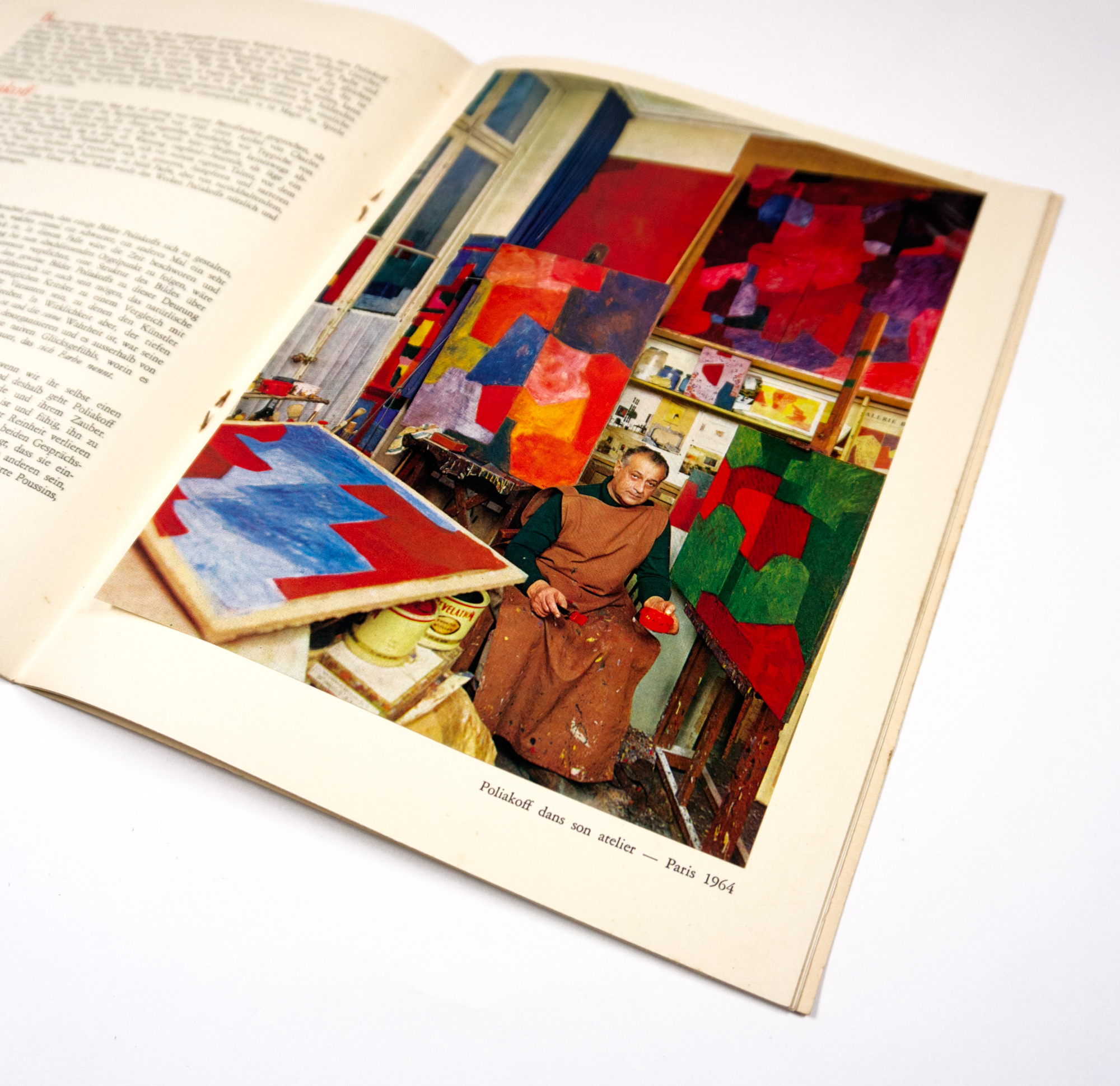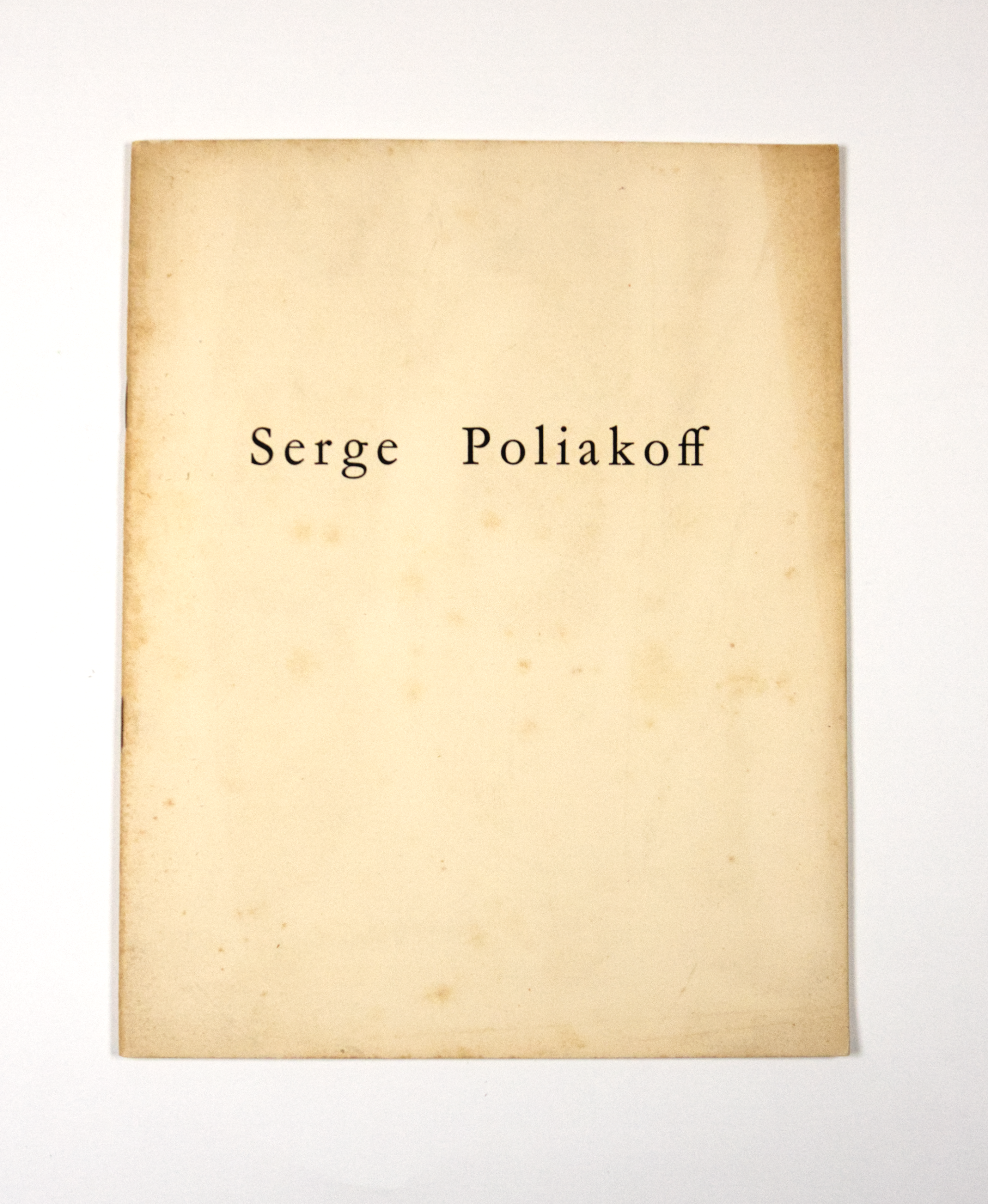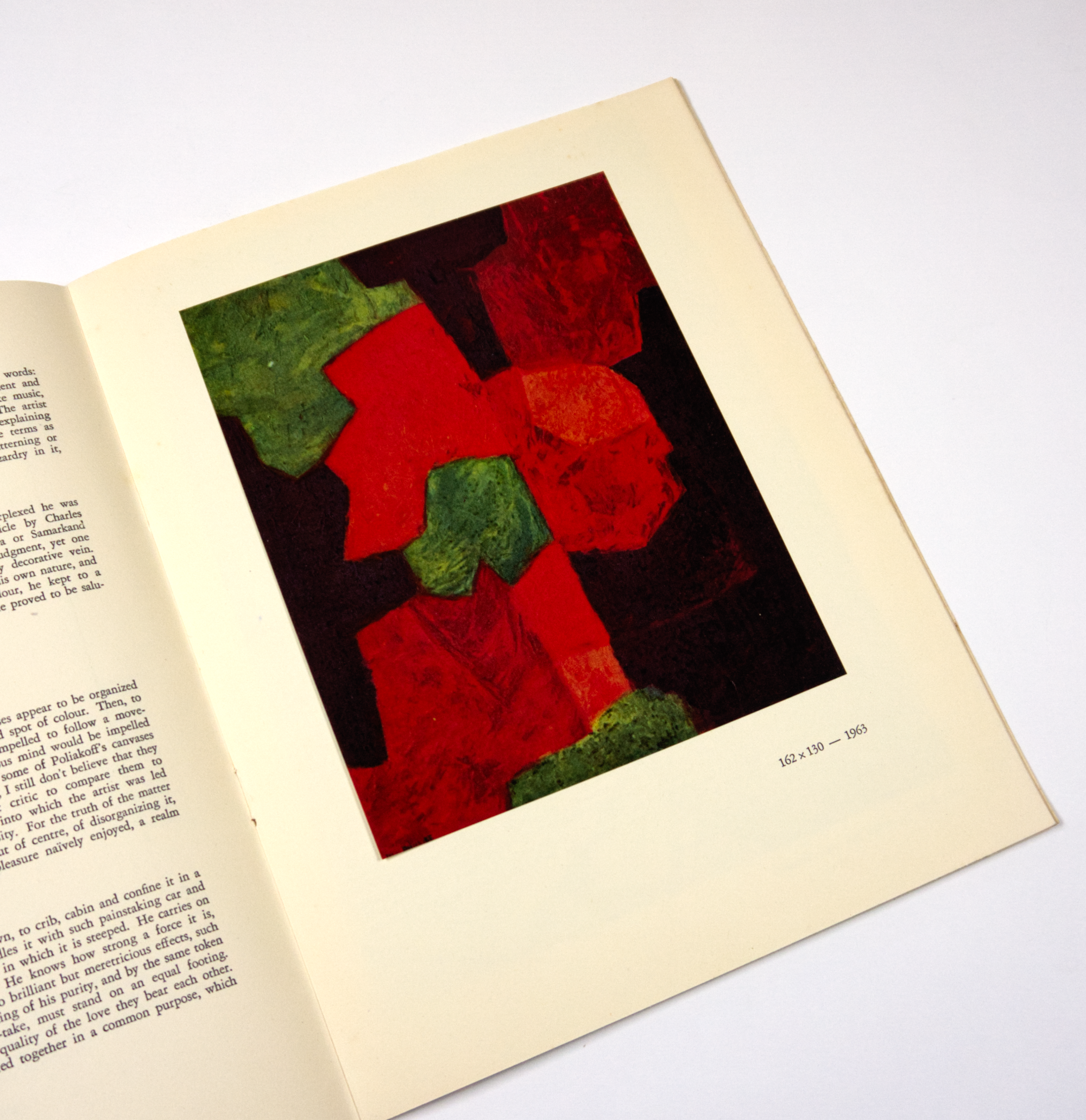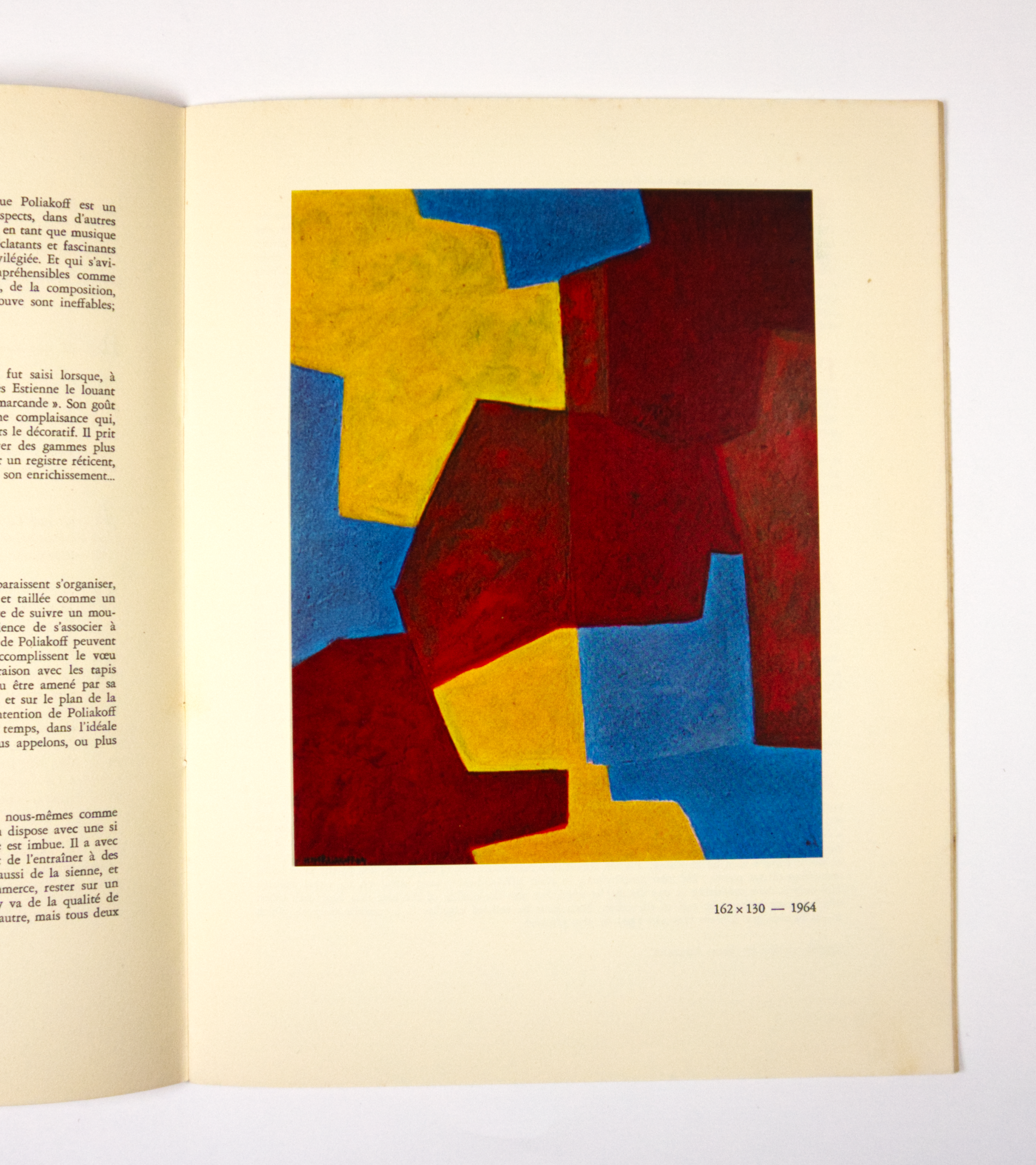 Image 1 of 6
Image 1 of 6

 Image 2 of 6
Image 2 of 6

 Image 3 of 6
Image 3 of 6

 Image 4 of 6
Image 4 of 6

 Image 5 of 6
Image 5 of 6

 Image 6 of 6
Image 6 of 6







Serge Poliakoff: Galerie de France (1963)
Exhibition catalogue
Publisher: Galerie de France
Artist: Serge Poliakoff (1900-1969)
Title: Serge Poliakoff - oeuvres récentes
Publication date: 1963
Contributors: Serge Poliakoff, Jean Cassou
Dimensions: 21 x 27 cm (8,27 x 10,63 in.)
Pages: Unpaginated
Languages: French, German and English
Edition: Single editionAbout
In 1964, Galerie de France in Paris hosted a notable exhibition of Serge Poliakoff, a prominent figure of the “Nouvelle École de Paris.” Previously, in 1962, he had become a French citizen and showcased his work in the French Pavilion at the Venice Biennale.
The 1964 exhibition showcased Poliakoff’s mature style: bold, abstract compositions built from interlocking color fields. His works, largely devoid of figurative references, demonstrated a balance between structure and spontaneity. By then, his vocabulary had crystallized into a sophisticated formal language — drawing from Orphism, De Stijl, and his own spiritual reflections on color and form.
A crucial document accompanying this exhibition was the exhibition catalogue, prefaced by art historian Jean Cassou, a key figure in postwar French cultural life. The preface lent critical authority to the show and placed Poliakoff among the leading painters of abstract art in Europe.
Serge Poliakoff (1900-1969):
Serge Poliakoff (1900–1969) was a Russian-born French abstract painter best known for his richly colored, interlocking forms that defined postwar abstraction in Europe. After studying in Moscow and later at the Académie de la Grande Chaumière in Paris, he developed a unique visual language rooted in non-figurative composition, marked by bold color fields and a deep spiritual sensibility. Influenced by Orphism, Kandinsky, and the tenets of Constructivism, Poliakoff rejected narrative and symbolism in favor of chromatic balance and formal tension. As a central figure of the Nouvelle École de Paris, his work was widely exhibited across Europe, culminating in major shows such as the 1963 Galerie de France exhibition and his inclusion in the French Pavilion at the 1962 Venice Biennale.
Condition:Good overall condition (Integrity and authenticity). Signs of age and wear.
Provenance: Acquired from a private collection in Portugal. Ownership: Monginho Collection
Exhibition catalogue
Publisher: Galerie de France
Artist: Serge Poliakoff (1900-1969)
Title: Serge Poliakoff - oeuvres récentes
Publication date: 1963
Contributors: Serge Poliakoff, Jean Cassou
Dimensions: 21 x 27 cm (8,27 x 10,63 in.)
Pages: Unpaginated
Languages: French, German and English
Edition: Single editionAbout
In 1964, Galerie de France in Paris hosted a notable exhibition of Serge Poliakoff, a prominent figure of the “Nouvelle École de Paris.” Previously, in 1962, he had become a French citizen and showcased his work in the French Pavilion at the Venice Biennale.
The 1964 exhibition showcased Poliakoff’s mature style: bold, abstract compositions built from interlocking color fields. His works, largely devoid of figurative references, demonstrated a balance between structure and spontaneity. By then, his vocabulary had crystallized into a sophisticated formal language — drawing from Orphism, De Stijl, and his own spiritual reflections on color and form.
A crucial document accompanying this exhibition was the exhibition catalogue, prefaced by art historian Jean Cassou, a key figure in postwar French cultural life. The preface lent critical authority to the show and placed Poliakoff among the leading painters of abstract art in Europe.
Serge Poliakoff (1900-1969):
Serge Poliakoff (1900–1969) was a Russian-born French abstract painter best known for his richly colored, interlocking forms that defined postwar abstraction in Europe. After studying in Moscow and later at the Académie de la Grande Chaumière in Paris, he developed a unique visual language rooted in non-figurative composition, marked by bold color fields and a deep spiritual sensibility. Influenced by Orphism, Kandinsky, and the tenets of Constructivism, Poliakoff rejected narrative and symbolism in favor of chromatic balance and formal tension. As a central figure of the Nouvelle École de Paris, his work was widely exhibited across Europe, culminating in major shows such as the 1963 Galerie de France exhibition and his inclusion in the French Pavilion at the 1962 Venice Biennale.
Condition:Good overall condition (Integrity and authenticity). Signs of age and wear.
Provenance: Acquired from a private collection in Portugal. Ownership: Monginho Collection

